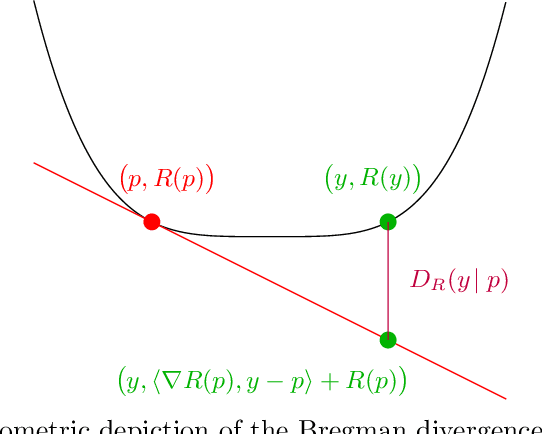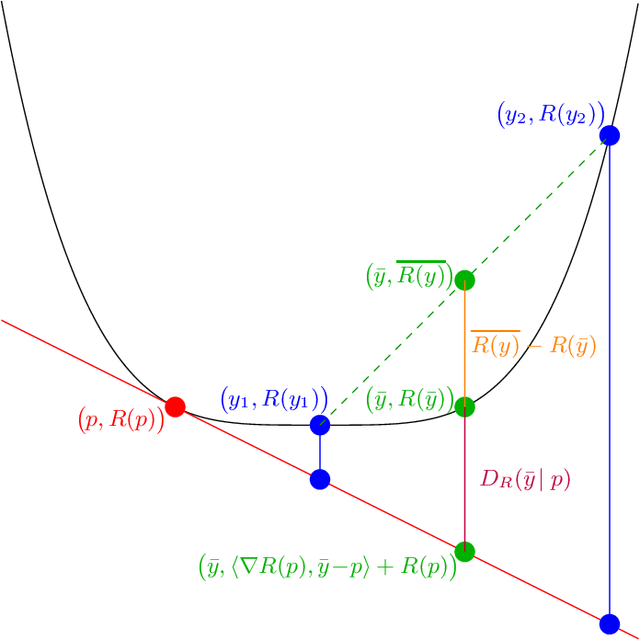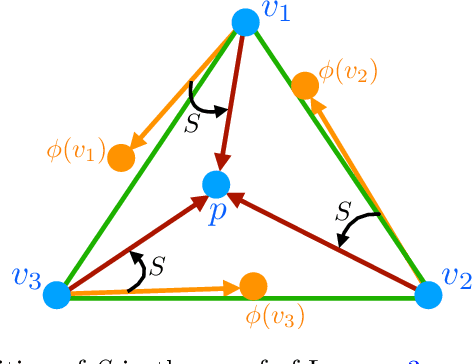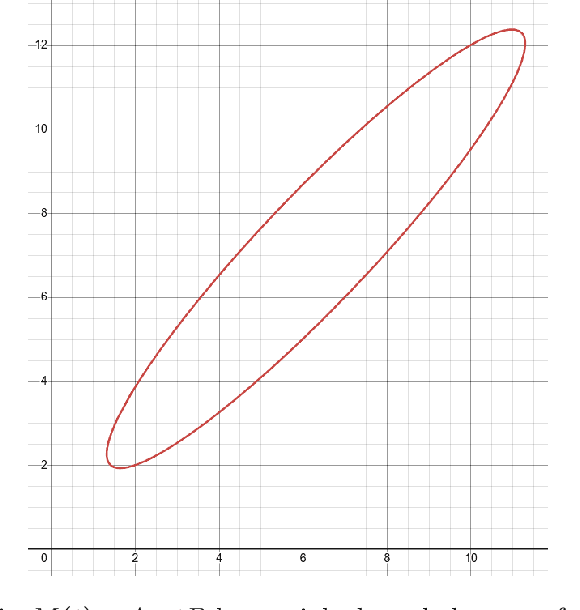Mehryar Mohri
AT&T Laboratories
Budgeted Multiple-Expert Deferral
Oct 30, 2025Abstract:Learning to defer uncertain predictions to costly experts offers a powerful strategy for improving the accuracy and efficiency of machine learning systems. However, standard training procedures for deferral algorithms typically require querying all experts for every training instance, an approach that becomes prohibitively expensive when expert queries incur significant computational or resource costs. This undermines the core goal of deferral: to limit unnecessary expert usage. To overcome this challenge, we introduce the budgeted deferral framework, which aims to train effective deferral algorithms while minimizing expert query costs during training. We propose new algorithms for both two-stage and single-stage multiple-expert deferral settings that selectively query only a subset of experts per training example. While inspired by active learning, our setting is fundamentally different: labels are already known, and the core challenge is to decide which experts to query in order to balance cost and predictive performance. We establish theoretical guarantees for both of our algorithms, including generalization bounds and label complexity analyses. Empirical results across several domains show that our algorithms substantially reduce training costs without sacrificing prediction accuracy, demonstrating the practical value of our budget-aware deferral algorithms.
Mastering Multiple-Expert Routing: Realizable $H$-Consistency and Strong Guarantees for Learning to Defer
Jun 25, 2025Abstract:The problem of learning to defer with multiple experts consists of optimally assigning input instances to experts, balancing the trade-off between their accuracy and computational cost. This is a critical challenge in natural language generation, but also in other fields such as image processing, and medical diagnostics. Recent studies have proposed surrogate loss functions to optimize deferral, but challenges remain in ensuring their consistency properties. This paper introduces novel surrogate loss functions and efficient algorithms with strong theoretical learning guarantees. We address open questions regarding realizable $H$-consistency, $H$-consistency bounds, and Bayes-consistency for both single-stage (jointly learning predictor and deferral function) and two-stage (learning only the deferral function with a fixed expert) learning scenarios. For single-stage deferral, we introduce a family of new realizable $H$-consistent surrogate losses and further prove $H$-consistency for a selected member. For two-stage deferral, we derive new surrogate losses that achieve realizable $H$-consistency, $H$-consistency bounds, and Bayes-consistency for the two-expert scenario and, under natural assumptions, multiple-expert scenario. Additionally, we provide enhanced theoretical guarantees under low-noise assumptions for both scenarios. Finally, we report the results of experiments using our proposed surrogate losses, comparing their performance against existing baselines.
High-Dimensional Calibration from Swap Regret
May 27, 2025


Abstract:We study the online calibration of multi-dimensional forecasts over an arbitrary convex set $\mathcal{P} \subset \mathbb{R}^d$ relative to an arbitrary norm $\Vert\cdot\Vert$. We connect this with the problem of external regret minimization for online linear optimization, showing that if it is possible to guarantee $O(\sqrt{\rho T})$ worst-case regret after $T$ rounds when actions are drawn from $\mathcal{P}$ and losses are drawn from the dual $\Vert \cdot \Vert_*$ unit norm ball, then it is also possible to obtain $\epsilon$-calibrated forecasts after $T = \exp(O(\rho /\epsilon^2))$ rounds. When $\mathcal{P}$ is the $d$-dimensional simplex and $\Vert \cdot \Vert$ is the $\ell_1$-norm, the existence of $O(\sqrt{T\log d})$-regret algorithms for learning with experts implies that it is possible to obtain $\epsilon$-calibrated forecasts after $T = \exp(O(\log{d}/\epsilon^2)) = d^{O(1/\epsilon^2)}$ rounds, recovering a recent result of Peng (2025). Interestingly, our algorithm obtains this guarantee without requiring access to any online linear optimization subroutine or knowledge of the optimal rate $\rho$ -- in fact, our algorithm is identical for every setting of $\mathcal{P}$ and $\Vert \cdot \Vert$. Instead, we show that the optimal regularizer for the above OLO problem can be used to upper bound the above calibration error by a swap regret, which we then minimize by running the recent TreeSwap algorithm with Follow-The-Leader as a subroutine. Finally, we prove that any online calibration algorithm that guarantees $\epsilon T$ $\ell_1$-calibration error over the $d$-dimensional simplex requires $T \geq \exp(\mathrm{poly}(1/\epsilon))$ (assuming $d \geq \mathrm{poly}(1/\epsilon)$). This strengthens the corresponding $d^{\Omega(\log{1/\epsilon})}$ lower bound of Peng, and shows that an exponential dependence on $1/\epsilon$ is necessary.
Swap Regret and Correlated Equilibria Beyond Normal-Form Games
Feb 27, 2025Abstract:Swap regret is a notion that has proven itself to be central to the study of general-sum normal-form games, with swap-regret minimization leading to convergence to the set of correlated equilibria and guaranteeing non-manipulability against a self-interested opponent. However, the situation for more general classes of games -- such as Bayesian games and extensive-form games -- is less clear-cut, with multiple candidate definitions for swap-regret but no known efficiently minimizable variant of swap regret that implies analogous non-manipulability guarantees. In this paper, we present a new variant of swap regret for polytope games that we call ``profile swap regret'', with the property that obtaining sublinear profile swap regret is both necessary and sufficient for any learning algorithm to be non-manipulable by an opponent (resolving an open problem of Mansour et al., 2022). Although we show profile swap regret is NP-hard to compute given a transcript of play, we show it is nonetheless possible to design efficient learning algorithms that guarantee at most $O(\sqrt{T})$ profile swap regret. Finally, we explore the correlated equilibrium notion induced by low-profile-swap-regret play, and demonstrate a gap between the set of outcomes that can be implemented by this learning process and the set of outcomes that can be implemented by a third-party mediator (in contrast to the situation in normal-form games).
Multi-Label Learning with Stronger Consistency Guarantees
Jul 18, 2024Abstract:We present a detailed study of surrogate losses and algorithms for multi-label learning, supported by $H$-consistency bounds. We first show that, for the simplest form of multi-label loss (the popular Hamming loss), the well-known consistent binary relevance surrogate suffers from a sub-optimal dependency on the number of labels in terms of $H$-consistency bounds, when using smooth losses such as logistic losses. Furthermore, this loss function fails to account for label correlations. To address these drawbacks, we introduce a novel surrogate loss, multi-label logistic loss, that accounts for label correlations and benefits from label-independent $H$-consistency bounds. We then broaden our analysis to cover a more extensive family of multi-label losses, including all common ones and a new extension defined based on linear-fractional functions with respect to the confusion matrix. We also extend our multi-label logistic losses to more comprehensive multi-label comp-sum losses, adapting comp-sum losses from standard classification to the multi-label learning. We prove that this family of surrogate losses benefits from $H$-consistency bounds, and thus Bayes-consistency, across any general multi-label loss. Our work thus proposes a unified surrogate loss framework benefiting from strong consistency guarantees for any multi-label loss, significantly expanding upon previous work which only established Bayes-consistency and for specific loss functions. Additionally, we adapt constrained losses from standard classification to multi-label constrained losses in a similar way, which also benefit from $H$-consistency bounds and thus Bayes-consistency for any multi-label loss. We further describe efficient gradient computation algorithms for minimizing the multi-label logistic loss.
Enhanced $H$-Consistency Bounds
Jul 18, 2024Abstract:Recent research has introduced a key notion of $H$-consistency bounds for surrogate losses. These bounds offer finite-sample guarantees, quantifying the relationship between the zero-one estimation error (or other target loss) and the surrogate loss estimation error for a specific hypothesis set. However, previous bounds were derived under the condition that a lower bound of the surrogate loss conditional regret is given as a convex function of the target conditional regret, without non-constant factors depending on the predictor or input instance. Can we derive finer and more favorable $H$-consistency bounds? In this work, we relax this condition and present a general framework for establishing enhanced $H$-consistency bounds based on more general inequalities relating conditional regrets. Our theorems not only subsume existing results as special cases but also enable the derivation of more favorable bounds in various scenarios. These include standard multi-class classification, binary and multi-class classification under Tsybakov noise conditions, and bipartite ranking.
Realizable $H$-Consistent and Bayes-Consistent Loss Functions for Learning to Defer
Jul 18, 2024Abstract:We present a comprehensive study of surrogate loss functions for learning to defer. We introduce a broad family of surrogate losses, parameterized by a non-increasing function $\Psi$, and establish their realizable $H$-consistency under mild conditions. For cost functions based on classification error, we further show that these losses admit $H$-consistency bounds when the hypothesis set is symmetric and complete, a property satisfied by common neural network and linear function hypothesis sets. Our results also resolve an open question raised in previous work (Mozannar et al., 2023) by proving the realizable $H$-consistency and Bayes-consistency of a specific surrogate loss. Furthermore, we identify choices of $\Psi$ that lead to $H$-consistent surrogate losses for any general cost function, thus achieving Bayes-consistency, realizable $H$-consistency, and $H$-consistency bounds simultaneously. We also investigate the relationship between $H$-consistency bounds and realizable $H$-consistency in learning to defer, highlighting key differences from standard classification. Finally, we empirically evaluate our proposed surrogate losses and compare them with existing baselines.
Cardinality-Aware Set Prediction and Top-$k$ Classification
Jul 09, 2024Abstract:We present a detailed study of cardinality-aware top-$k$ classification, a novel approach that aims to learn an accurate top-$k$ set predictor while maintaining a low cardinality. We introduce a new target loss function tailored to this setting that accounts for both the classification error and the cardinality of the set predicted. To optimize this loss function, we propose two families of surrogate losses: cost-sensitive comp-sum losses and cost-sensitive constrained losses. Minimizing these loss functions leads to new cardinality-aware algorithms that we describe in detail in the case of both top-$k$ and threshold-based classifiers. We establish $H$-consistency bounds for our cardinality-aware surrogate loss functions, thereby providing a strong theoretical foundation for our algorithms. We report the results of extensive experiments on CIFAR-10, CIFAR-100, ImageNet, and SVHN datasets demonstrating the effectiveness and benefits of our cardinality-aware algorithms.
Rate-Preserving Reductions for Blackwell Approachability
Jun 10, 2024


Abstract:Abernethy et al. (2011) showed that Blackwell approachability and no-regret learning are equivalent, in the sense that any algorithm that solves a specific Blackwell approachability instance can be converted to a sublinear regret algorithm for a specific no-regret learning instance, and vice versa. In this paper, we study a more fine-grained form of such reductions, and ask when this translation between problems preserves not only a sublinear rate of convergence, but also preserves the optimal rate of convergence. That is, in which cases does it suffice to find the optimal regret bound for a no-regret learning instance in order to find the optimal rate of convergence for a corresponding approachability instance? We show that the reduction of Abernethy et al. (2011) does not preserve rates: their reduction may reduce a $d$-dimensional approachability instance $I_1$ with optimal convergence rate $R_1$ to a no-regret learning instance $I_2$ with optimal regret-per-round of $R_2$, with $R_{2}/R_{1}$ arbitrarily large (in particular, it is possible that $R_1 = 0$ and $R_{2} > 0$). On the other hand, we show that it is possible to tightly reduce any approachability instance to an instance of a generalized form of regret minimization we call improper $\phi$-regret minimization (a variant of the $\phi$-regret minimization of Gordon et al. (2008) where the transformation functions may map actions outside of the action set). Finally, we characterize when linear transformations suffice to reduce improper $\phi$-regret minimization problems to standard classes of regret minimization problems in a rate preserving manner. We prove that some improper $\phi$-regret minimization instances cannot be reduced to either subclass of instance in this way, suggesting that approachability can capture some problems that cannot be phrased in the language of online learning.
A Universal Growth Rate for Learning with Smooth Surrogate Losses
May 09, 2024


Abstract:This paper presents a comprehensive analysis of the growth rate of $H$-consistency bounds (and excess error bounds) for various surrogate losses used in classification. We prove a square-root growth rate near zero for smooth margin-based surrogate losses in binary classification, providing both upper and lower bounds under mild assumptions. This result also translates to excess error bounds. Our lower bound requires weaker conditions than those in previous work for excess error bounds, and our upper bound is entirely novel. Moreover, we extend this analysis to multi-class classification with a series of novel results, demonstrating a universal square-root growth rate for smooth comp-sum and constrained losses, covering common choices for training neural networks in multi-class classification. Given this universal rate, we turn to the question of choosing among different surrogate losses. We first examine how $H$-consistency bounds vary across surrogates based on the number of classes. Next, ignoring constants and focusing on behavior near zero, we identify minimizability gaps as the key differentiating factor in these bounds. Thus, we thoroughly analyze these gaps, to guide surrogate loss selection, covering: comparisons across different comp-sum losses, conditions where gaps become zero, and general conditions leading to small gaps. Additionally, we demonstrate the key role of minimizability gaps in comparing excess error bounds and $H$-consistency bounds.
 Add to Chrome
Add to Chrome Add to Firefox
Add to Firefox Add to Edge
Add to Edge